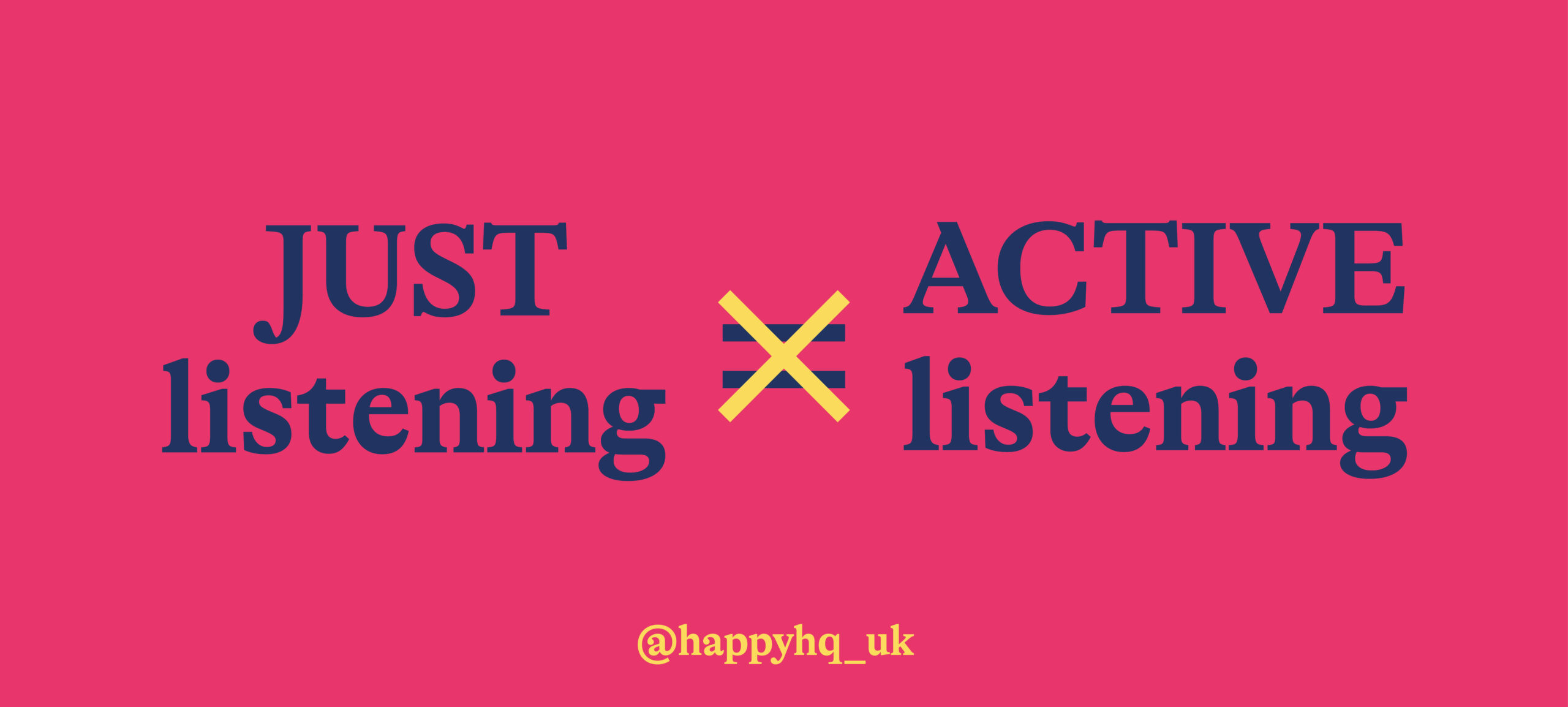Studies show that many of us are missing the physical interaction the office brings. With remote working here to stay for a while; it’s never been more important to actively listen to people.
Active listening is important in all aspects of our lives, but particularly at work. Why? Because when we feel heard, we automatically feel valued, but there’s a huge difference between just listening and ACTIVE listening.
So What’s the Difference?
Active listening refers to the practice of listening which ensures you remain engaged within a conversation.
It involves really* listening to what’s being said in order to gain trust (definitely not as easy as it sounds), interpreting and reflecting back to the speaker to show interest and understanding, whilst also observing body language to ensure a balanced non-judgemental conversation.
What are Poor Listening Habits?
*A lot of the time we don’t think twice about how we listen, and by doing so we can pick up some pretty poor listening habits – without even realising! These can include:
- Not paying attention – allowing yourself to get distracted and think about anything else than the conversation being had.
- False listening – acting like you’re listening when really all you’re thinking about is the curry you’re ordering tonight (we’ve all been there).
- Rehearsing – you listen until you hear something you want to respond to, then you stop listening, practising what you’re going to say at your next opportunity.
- Interrupting – speaking over someone before they’ve finished.
- Hearing what you expect to hear – rather than what’s actually being said, or even refusing to hear what’s being said.
- Defensive listening – missing the message because you expect a ‘verbal attack’.
- Aggressive listening – listening out for points to which you can disagree and ‘verbally attack’.
What are Strong Listening Habits?
How can we practice active listening?
- Reflect on feelings – this shows you have been paying attention; ‘so you feel like…’.
- Paraphrase – by interpreting and repeating back you are confirming you have understood correctly whilst creating opportunity for further discussion.
- Use verbal prompts – this can encourage the speaker to continue or clarify their point; for example, ‘I see’ or ‘go on’.
- Facial Expressions – your face should reflect the conversation not your thoughts, eye contact shouldn’t be too intense but enough to create a sense of trust.
- Body Language – try to remain relaxed and open as this will show through your posture, smiling and nodding creates a light-hearted and positive atmosphere.
- Don’t interrupt – or rush to fill the silence, the speaker may be gathering their thoughts. There will be natural breaks for your input.
- Summarise – feedback on the general theme of the conversation and any feelings/thoughts that were expressed.
So, the next time you go into a conversation don’t worry about filling the silences, use some of the above techniques and really listen!
At HappyHQ we have designed a service that ensures your listening to everyone’s ideas, views and opinions. Get in touch if you want to find out more, we’re all ears!


